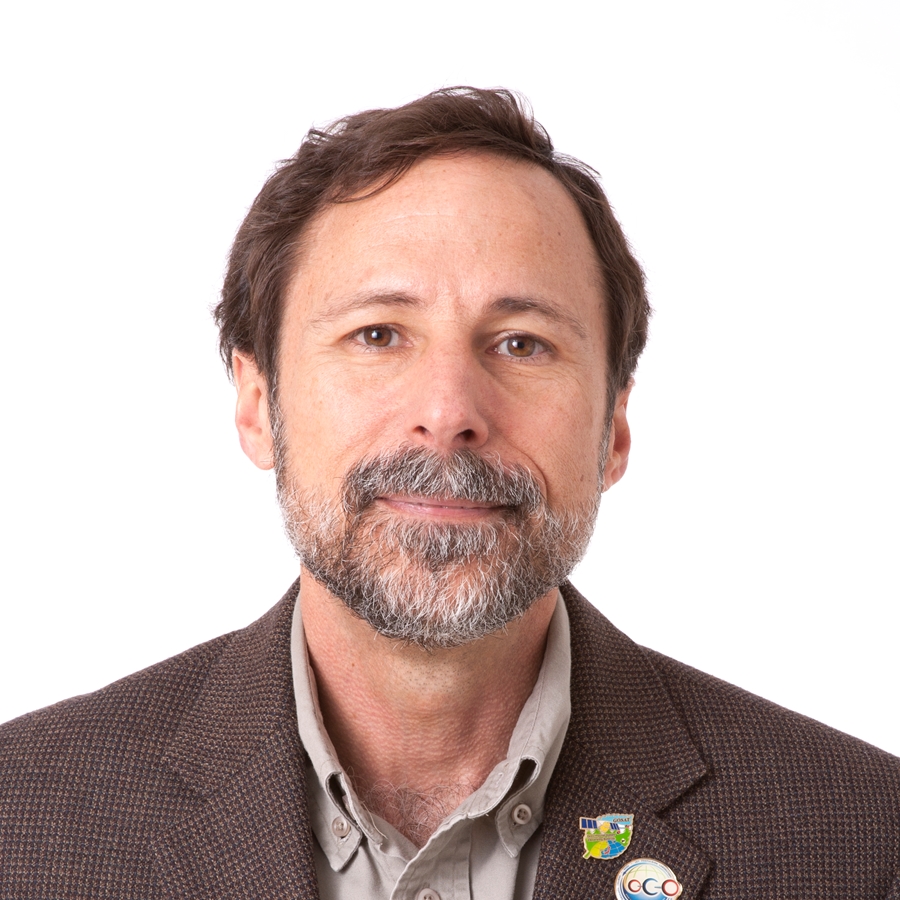
Atmospheric physicist David Crisp will present "Watching the Earth Breathe – Measuring Atmospheric Carbon Dioxide with NASA's Orbiting Carbon Observatory-2 (OCO-2)" at 7:30 p.m. Thursday, April 7. Crisp is the science team leader for NASA's OCO-2 mission, and is the University of Arkansas's 2016 Robert D. Maurer Distinguished Lecturer.
His talk is free and open to the public, and will last from 7:30 to 9 p.m. in the Giffels Auditorium. It will center on the way atmospheric carbon dioxide (CO2) measurements are expected to revolutionize our understanding of CO2 buildup - which correlates to escalating climate and water changes. This talk will also describe the OCO-2 mission, summarize its measurement approach, and present results from its first 15 months in operation.
"Dr. Crisp is at the forefront of our scientific understanding of atmospheric changes and what this means for us as a society," said Julio Gea-Banacloche, professor and Physics department chair at the J. William Fulbright College of Arts and Sciences. "His research is groundbreaking, and hearing about it will be invaluable to our students and the surrounding community."
Crisp said that fossil fuel combustion, deforestation, and other human activities are now adding almost 40 billion tons of CO2 to the atmosphere each year.
"While this amount is enough to increase the atmospheric concentration of this gas by one percent per year, interestingly, less than half of this CO2 stays airborne," said Crisp, who also works in the Jet Propulsion Laboratory at the California Institute of Technology. "The rest is apparently being absorbed by natural processes at the surface, whose identity and location are poorly understood."
Crisp said ground-based CO2 measurements accurately record the global atmospheric CO2 budget and its trends, but do not have the resolution or coverage needed to identify the "sources" emitting CO2 into the atmosphere or the natural "sinks" absorbing this gas.
"One way to improve the resolution and coverage of these measurements is to collect precise observations of CO2 from an orbiting satellite," Crisp said. "The OCO-2 is NASA's first satellite designed to address this need."
OCO-2 was successfully launched on July 2, 2014. By early September of 2014, it was recording almost a million measurements over Earth's sunlit hemisphere each day.
About David Crisp: Since receiving his doctorate from the Geophysical Fluid Dynamics Program at Princeton University in 1984, Crisp's research has focused primarily on the development of instruments and numerical models for analyzing light reflected, emitted, and scattered by atmospheres and surfaces of Venus, Earth, Mars, and more recently, a few exoplanets.
He has served on the science teams of several missions including the Soviet/French/U.S VEGA Balloon mission, NASA's Hubble Space Telescope Wide Field/Planetary Camera-2, and Mars Pathfinder missions, and the European Space Agency's Venus Express mission. He was also the chief scientist of the New Millennium Program, NASA's space flight technology demonstration program, from 1997 to 2001.
Additionally, Crisp was the principal investigator of the Orbiting Carbon Observatory (OCO) mission, NASA's first mission designed specifically to measure atmospheric carbon dioxide. He is currently serving as the science team leader for NASA's OCO-2 mission.
About the Maurer Distinguished Lecture Series: The Maurer Distinguished Lecture Series began in 1995 in honor of Robert D. Maurer, distinguished alumnus of the Department of Physics. A native of Arkadelphia, Maurer received a doctorate from the Massachusetts Institute of Technology and was awarded an honorary Doctor of Laws degree from the University of Arkansas in 1980.
Maurer became a senior research fellow at Corning Glass Works in Corning, N.Y., where his work with optical fibers is still transforming the communications industry. He and his research team received the National Medal of Technology and Innovation in 2000 for their co-invention of low-loss fiber optic cable. The medal is bestowed on America's leading innovators by the president of the United States and is considered the nation's highest honor for technological achievement.
The Maurer Lecture Series is sponsored by the department of physics in the J. William Fulbright College of Arts and Sciences.
About the J. William Fulbright College of Arts and Sciences: The J. William Fulbright College of Arts and Sciences is the largest and most academically diverse unit on campus with 19 departments and 43 academic programs and research centers. The college provides the core curriculum for all University of Arkansas students and is named for J. William Fulbright, former university president and longtime U.S. senator.
Contacts
Julio Gea-Banacloche, professor and chair, Department of Physics
J. William Fulbright College of Arts and Sciences
479-575-7240, jgeabana@uark.edu
Andra Parrish Liwag, director of communications
J. William Fulbright College of Arts and Sciences
479-575-4393, liwag@uark.edu